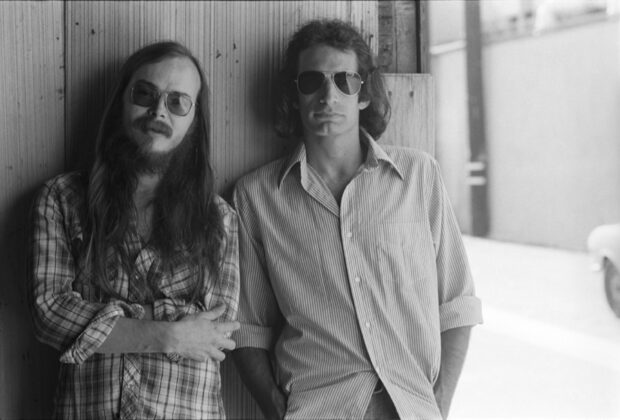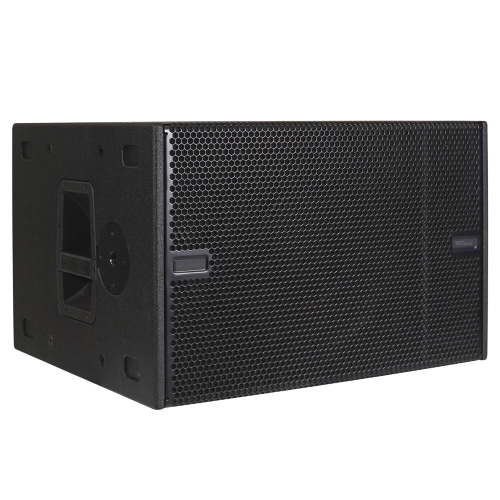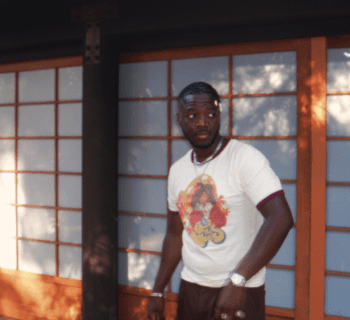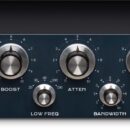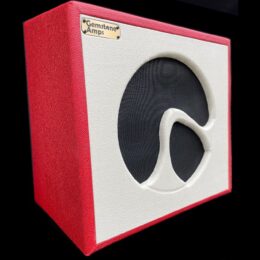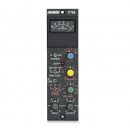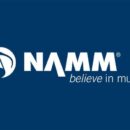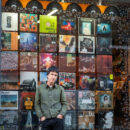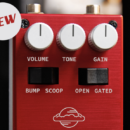Photos By Henry Diltz, Courtesy of Gary Strobl at the Diltz Archive
Steely Dan’s classic ABC and MCA Records catalog is returning to vinyl with an extensive yearlong reissue program of the band’s first seven albums, which is being personally overseen by founding member Donald Fagen.
The series kicked off in November 2022 with the album that started it all, 1972’s, Can’t Buy A Thrill, now in its 50th anniversary year, featuring the band’s breakthrough hits, “Do It Again,” “Reelin’ in the Years,” and “Dirty Work,” with original lead vocalist David Palmer.
Today, Fagen continues leading a version of Steely Dan following the 2017 death of Becker.
The LPs, most of which haven’t been widely available since their original release, will be available on 180-gram vinyl via Geffen/UMe.
The vinyl edition of the band’s second album, Countdown to Ecstasy, arrived on May 26th.
The 1973 LP features “Bodhisattva,” “Show Biz Kids” and “My Old School,” sung by Fagen who took over as lead vocalist.
There will also be a limited-edition premium 45 RPM version on Ultra High-Quality Vinyl (UHQR) from Analogue Productions, the audiophile in-house reissue label of Acoustic Sounds. Analogue Productions is also releasing this series of titles on Super Audio CD (SACD).
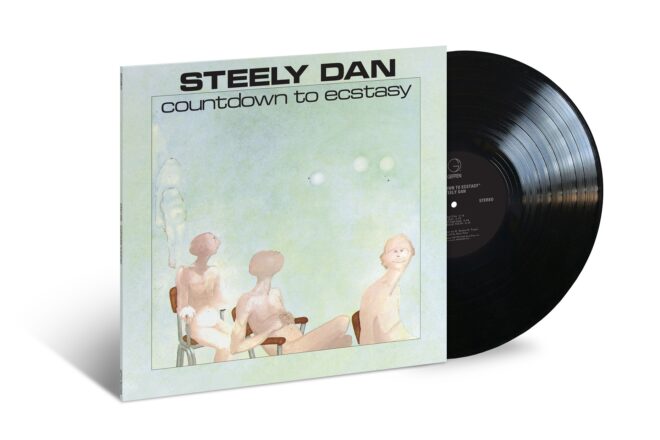
More from the label’s announcement: "All albums are being remastered by Bernie Grundman from the original analog tapes except for Aja, which will be mastered from an analog, non-EQ’d, tape copy, and Gaucho, which will be sourced from a 1980 analog tape copy originally EQ’d by Bob Ludwig. Lacquers for UMe’s standard 33 1/3 RPM 180-gram version will be cut by Alex Abrash at his renowned AA Mastering studio from high-resolution digital files of Grundman’s new masters and pressed at Precision. They will be housed in reproductions of the original artwork.
"The 45 RPM UHQR version will be pressed at Analogue Productions’ Quality Record Pressings on 200-gram Clarity Vinyl, packaged in a deluxe box, and will include a booklet detailing the entire process of making a UHQR along with a certificate of inspection. Each UHQR is pressed, using hand-selected vinyl, with attention paid to every single detail of every single record. All of the innovations introduced by QRP that have been generating such incredible critical acclaim are applied to each UHQR. The 200-gram records feature the same flat profile that helped to make the original UHQR so desirable."
There's a new book about Steely Dan, Quantum Criminals, by writer Alex Pappademas and artist Joan LeMay who provide a roadmap to Steely Dan's world by examining and portraying characters in their songs. The title is in the spirit of Rock Dreams by Nik Cohn and Guy Peellaert.
Now that Fagen is overseeing remastered vinyl editions of the Steely Dan catalog, I felt it was appropriate to go into my archive and look back at my interview encounters with the Fagen/Becker team conducted for the now defunct Melody Maker and Phonograph Record News.
On night in 1977 I co-hosted a late night radio program on KPFK-FM (90.7) in Studio City, California with deejay, music writer/critic Richard Cromelin, then with The Los Angeles Times, and engineer Captain Midnight. We actually world premiered two Steely Dan Aja selections.
Steely Dan’s Donald Fagen and Walter Becker drove over from their Malibu pads and chatted for a couple of hours, whipped out their acetate pressing of Aja and the phone lines lit up. The duo spun “Aja" and "Black Cow” along with some vintage jazz library selections around the initial global airing of Aja.
Walter Becker was born in New York City in 1950. In the early ‘60s he had his mind blown by TV host/writer Steve Allen’s musical theme, “Gravy Waltz.”
He was subsequently exposed to Miles Davis records and picked up the tenor saxophone. He heard Bob Dylan on the radio, went to Manny’s music store and got himself a Martin Guitar, a harmonica and a harmonica holder. Becker then learned some blues riffs from guitarist Randy Wolf, later Randy California of Spirit fame.
Becker met his musical partner Donald Fagen at Bard College in Annandale-on-Hudson in upstate New York. The school, and the town, served as the setting in their tune “My Old School.”
Steely Dan was formed in 1972 by staff songwriters Fagan (Keyboards/vocals) and Becker (guitar and bass) then based at ABC Records in Los Angeles and working with record producer Gary Katz.
In 1972 the debut Steely Dan LP, Can’t Buy a Thrill, a direct lyric from Bob Dylan’s “It Takes a Lot To Laugh a Train To Cry” from his Highway 61 Revisited album hit the airwaves and the record shops.
Subsequently, Steely Dan sold more than 30 million albums worldwide and inducted into the Rock and Roll Hall of Fame in 2001.
My brother Kenneth and I saw the original Steely Dan band at the Whisky A Go Go, their first Hollywood booking, and also at a venue in Glendale circa 1972, The Sopwith Camel.
In 1974, I caught Steely Dan at their Midnight Special tapings in Burbank. During '74 I attended the landmark Santa Monica Civic Auditorium "final" gig.
In 1977 I was later invited by Walter to a Root Boy Slim recording session at the ABC studio and Root Boy Slim's debut at the Roxy Theater in West Hollywood.
When I was the West Coast Director of A&R for MCA Records 1978-1979, I made the suggestion about Walt and Don doing future liner notes for the Impulse Records jazz reissues after our ABC label acquisition.
The idea was greeted by a sense of disbelief by some fellow executives...
During 1999 I interviewed Walter Becker. Portions of our conversation were initially published in HITS magazine.
Becker discussed his just released solo album 11 Tracks of Whack. A 4-CD box set, Citizen Steely Dan was recently issued.
In our phone call, Becker reflected about '90s Steely Dan US live tours, life on the road again after nearly 20 years off, and the Steely Dan CD catalog.
[After our conversation, I mailed Becker the Dot Records Grammy plaque for Steve Allen's "Gravy Waltz." I had received it courtesy of John Wood, son of Dot Records founder and visionary, Randy Wood. John and I wanted to gift Walter with this award].
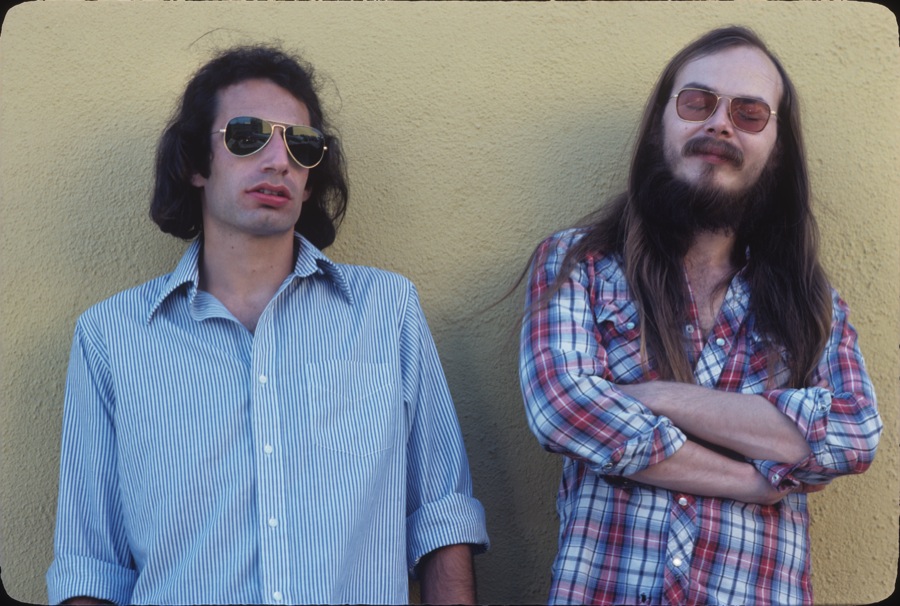
Harvey Kubernik and Walter Becker Interview
Q: In the mid-nineties how did you and Donald Fagen put together this tour as far as musicians to perform your material and song selections for your concerts?
A: Donald and I have been lucky enough to have performed with a lot of great musicians in the last few years. Between the people he’s worked with on the New York Rock and Soul Revue, and the people I’ve worked with producing jazz records and pop records and the guys in the band are chosen from that bunch with a special eye in mind for not only great players but also people you’d like to travel around with for a month.
The net result being not only a very good band but a pleasant bunch of people. In putting together the show we sort of figured what would make a satisfying show for the audience from amongst the tunes that we really felt like getting out and playing, you know what I mean. Obviously there’s a lot of tunes we could choose from, but some of them we don’t feel like revisiting particularly, and some others that we do.
Q: In seeing the original touring group in the ‘70s, and the ‘90s live gigs it’s fascinating that the audience who attend your concerts know you pretty much exclusively from radio exposure, reissues, and the Citizen Steely Dan box set. The listeners know the music, your songs, and now twenty years later see the people, or the principals songwriters who put it together.
A: For better or worse. A big bulk of the tunes that we are doing in concert we never performed them live. So we’re doing them live for the first time and that kind of gives it a little bit more of a credible recreation of something it might be.
Q: I also noticed at Steely Dan gigs, and a recent show I saw a few years back, Roger Nichols (engineer and veteran board director sound man for Steely Dan), is involved in mixing your live sound.
A: When we came to L.A. in the early '70s Roger was an archetypical –in our eyes—southern California guy… Sports car, scuba diving, filming auto races, all this stuff. That was a different lifestyle than anything Donald and I were familiar with and I think most of our interaction with Roger in those days was in the studio. I don’t think anyone showed us the ropes in L.A. Now I don’t really think there are any ropes in L.A.
Q: You have a different drummer and guitarist in ’94 as opposed to the ’93 lineup.
A: I think those two things make a difference in the sound of the band and the performances. And we added a bunch of stuff to the show and the repertoire so there’s obviously things we did last year, and this year there’s enough new stuff we feel adds another dimension for people who are going to come again. Also, as we went on in 1993, as well as earlier in Japan we kind of tightened up and honed the set list and the approach to putting together the set to the point where I think it probably is an over all better thing; a more satisfying trajectory for the show.
Q: Have the songs become even more rewarding because they now stood up to the test of time; 20 years on public display.
A: It’s funny, but that kind of thing probably happens more for listeners than for us playing them. We selected new songs we had never played before. And of the songs we had done years ago, we tried to diddle with them a little bit so that we’d feel fresh to play them and when we’re actually doing it that’s probably not so much the case for us than for people in the audience.
Q: Also, maybe with a couple of film scores, and some remastered reissues, Steely Dan, and especially the songs haven’t been commercialized.
A: As far as not having our songs commercialized or exploited, on the one hand people were not for the most part running out to do cheesy cover versions of our songs.
Q: Touring seems easier for you now. You smile on stage. And the more recent tour was better organized and less stressful than what I remember of the gigs in 1974. Back then the songs seemed rushed. Hectic.
A: Then, even on our best nights, it was this out of control kind of thing.
Q: You told Venice magazine “Donald and I were trying to do this well orchestrated thing, and we had these wild men we were doing it with, including ourselves.”
A: Everybody was, uh, distracted by other elements in the traveling musician scenario. The thing is today, the scale at which we are doing it now makes it possible to call the shots in a much better way. And to plan things out. And the business of doing this has evolved to the point where it'’ very much a known technology and procedure. Everything has improved. I like playing live. It’s great fun, especially in this kind of context where basically everything is done for you and you kind of waltz in, and everything is pretty much perfect.
Q: You’ve been a staff writer with a publishing deal. You wrote for Steely Dan, and now, your own solo work. Are the disciplines the same in the writing situations?
A: I think the basic tools are the same and the basic skills are the same. And it’s been such a long time since I tried to write songs for other people and I think about doing it sometimes and I may sit down to try and do that again just to see what happens. But generally speaking, I don’t know how that would be again. Basically, it’s the same thing if you’re writing songs you know, and trying to put together the pieces of the song.
On this album my original concept involved a very stripped down sound, with strong emphasis on melody and bass line, and not too much in the way of chording. The idea was to get a line of kind of spacious feel, where the harmonies were more defined by melodies and roots than spelled out with static vertical comping type chords. My first dilemma was, how do I go about writing by myself, that is, without Donald?
In our collaboration, he provided a lot of the harmonic direction and overall tonal framework, and his ability to develop great chord sequences, striking modulations, and so on, became an essential ingredient in our writing style. I decided to use a minimalist approach that would enable me to focus on the overall thrust of the song, rather than bogging down in harmonic complexities and ornaments that were perhaps irrelevant in the musical context of the day.
When you’re collaborating, you often need to persuade your writing partner that an idea is interesting enough or strong enough to work with, and sometimes this is difficult or impossible to don. When you’re working alone, you get to follow your hunches a lot more.
I also took advantage of events unfolding in my immediate environs as subject matter for songs in a way that was somewhat different from what we used to do. Generally speaking, I tried to suspend my critical perception of what I was doing, musically and lyrically until I had completed something, so as to range out a bit into new areas. This experimental approach was helpful in maintaining a flow in my writing.
Q: I’ve followed Steely Dan since inception and even when you were tune writers after a road scene with Jay and The Americans, did you ever think both you and Donald could survive and flourish as band leaders in the record business? Brill Building to 10,000-15,000 seaters with your band, your tunes.
A: To answer your question in a larger framework, I think when Donald and I started out we were arrogant enough to think we would be successful, in spite of the fact of what we were doing was as far off the beaten path as it was. And so we kind of had enough confidence in what we were doing to keep at it long enough until we prevailed, so to speak.
Certainly, it would be hard to imagine that we are still doing this and events have taken the shape that they have, you know, so many years later, I mean, quite surprising. Obviously for Donald and myself you know. the primary thing, the focus all those years was records and radio. That’s how Donald and I got turned on to some of the more exotic music that we got to hear, because there was interesting radio out there. And through recordings, that was the primary access that we had to music.
My recording is out. I realize that writing words and music is the most enjoyable and satisfying part of the process, and something I was missing in my life. Now that I’m doing it again, I kind of feel like I have rediscovered some of the excitement I experienced in the beginning of my career, writing with Donald and later making those first few albums."
Harvey Kubernik is the author of 20 books, including 2009’s Canyon Of Dreams: The Magic And The Music Of Laurel Canyon and 2014’s Turn Up The Radio! Rock, Pop and Roll In Los Angeles 1956-1972. Sterling/Barnes and Noble in 2018 published Harvey and Kenneth Kubernik’s The Story Of The Band: From Big Pink To The Last Waltz. In2021 they wrote Jimi Hendrix: Voodoo Child for Sterling/Barnes and Noble. Otherworld Cottage Industries in 2020 published Harvey’s Docs That Rock, Music That Matters.
Kubernik’s writings are in several book anthologies. Most notably, The Rolling Stone Book Of The Beats and Drinking With Bukowski. Harvey wrote the liner notes to the CD re-releases of Carole King’s Tapestry, The Essential Carole King, Allen Ginsberg’s Kaddish, Elvis Presley The ’68 Comeback Special, The Ramones’ End of the Century and Big Brother & the Holding Company Captured Live at The Monterey International Pop Festival.
During 2006 Harvey spoke at the special hearings initiated by The Library of Congress held in Hollywood, California, discussing archiving practices and audiotape preservation.
In 2017 Harvey Kubernik appeared at the Rock and Roll Hall of Fame in Cleveland, Ohio, as part of their Distinguished Speakers Series.

